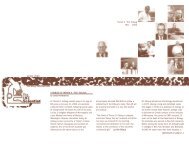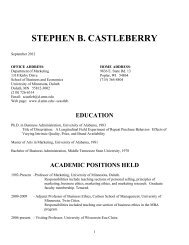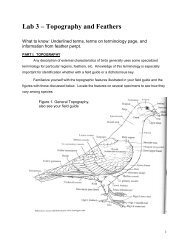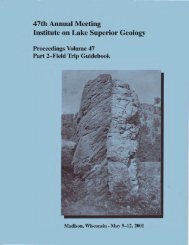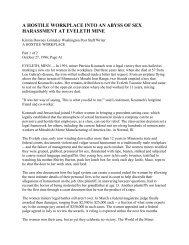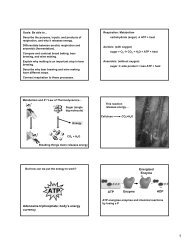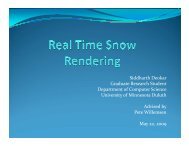Petrology and Cu-Ni-PGE Mineralization of the Bovine Igneous ...
Petrology and Cu-Ni-PGE Mineralization of the Bovine Igneous ...
Petrology and Cu-Ni-PGE Mineralization of the Bovine Igneous ...
You also want an ePaper? Increase the reach of your titles
YUMPU automatically turns print PDFs into web optimized ePapers that Google loves.
Thrust, <strong>the</strong> basin is distinguished by isoclinal or tight folds which are <strong>of</strong>ten over turned or<br />
recumbent, <strong>and</strong> are commonly overprinted by a second generation <strong>of</strong> folding (Rossell, 2008).<br />
1.1.3 Midcontinent Rift<br />
The 1.1 Ga Midcontinent Rift (MCR) extends 2000 km across <strong>the</strong> North American<br />
craton in an arcuate path stretching from <strong>the</strong> Lake Superior region to Kansas to <strong>the</strong> sou<strong>the</strong>ast<br />
<strong>and</strong> lower Michigan to <strong>the</strong> southwest (Fig. 4). The MCR marks <strong>the</strong> failed attempt at<br />
continental rifting <strong>of</strong> <strong>the</strong> North American craton (Laurentia) <strong>and</strong> is thought to have been<br />
triggered by a starting mantle plume (<strong>Ni</strong>cholson et al., 1997). The compressive force <strong>of</strong> <strong>the</strong><br />
Grenville orogeny along <strong>the</strong> eastern margin <strong>of</strong> North America is thought to have prevented<br />
complete rifting which commonly leads to continental separation <strong>and</strong> ocean basin formation<br />
(Cannon, 1992). During <strong>the</strong> period <strong>of</strong> active rifting <strong>and</strong> magmatism, <strong>the</strong> MCR became a large<br />
igneous province, extruding <strong>and</strong> intruding massive quantities <strong>of</strong> mafic <strong>and</strong> felsic magmas into<br />
its nearly 30 km deep rift basin (Hinze et al, 1997).<br />
Magmatic activity in <strong>the</strong> MCR lasted for roughly 23 million years from 1109 to 1086<br />
Ma, though recent dating <strong>of</strong> intrusions in Ontario (Heaman et al., 2007) suggest that MCRrelated<br />
magmatism probably began at 1112, <strong>and</strong> possibly as early as 1120 Ma. As noted in <strong>the</strong><br />
introduction, <strong>the</strong>se 23+ million years <strong>of</strong> magmatic activity can be broken down into at least<br />
four stages.<br />
The early magmatic stage (1112-1107 Ma) consisted <strong>of</strong> rapid extrusion <strong>and</strong><br />
emplacement <strong>of</strong> primitive melts derived from high degrees <strong>of</strong> partial melting <strong>of</strong> an enriched<br />
mantle plume <strong>and</strong> at greater depths than later magmas. Early primitive mafic magmas rapidly<br />
gave way to more evolved mafic melts that show signs <strong>of</strong> contamination by <strong>the</strong> subcontinental<br />
6





